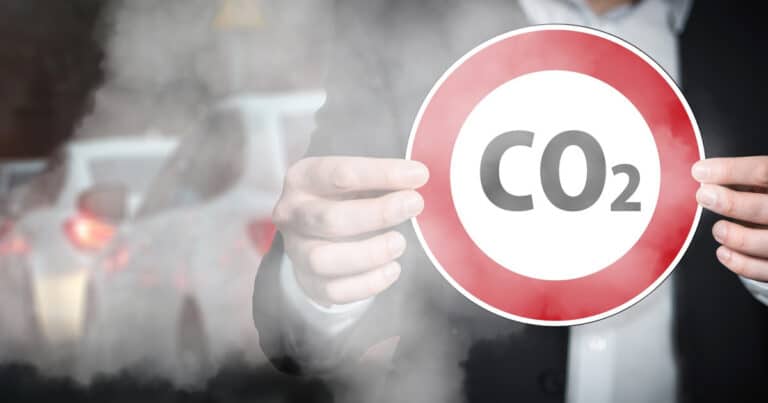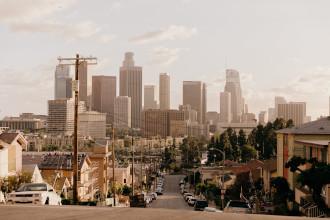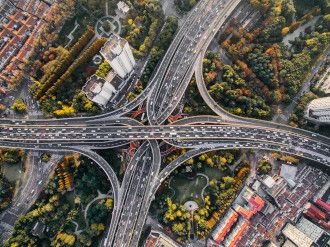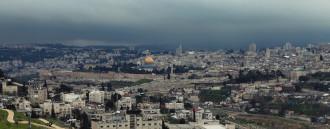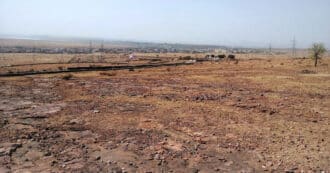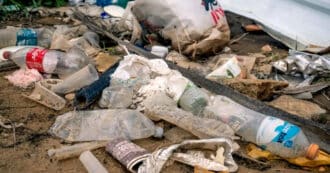By Matthew Mausner – Ever since humans discovered fire, there have been human activities that impact air quality. When those burning activities reach a certain scale, and when the smoke and emissions stay in the air and atmosphere and cause environmental degradation and other negative impacts, we call it air pollution. Here we turn our attention to air pollution solutions.
Are there solutions to reduce air pollution?
While there is probably no pure and complete ‘solution’ that would make human activity put zero pollutants into the air, there are many ways we can reduce the amount of air pollution.
What are the specific ways we can reduce air pollution?
We can improve the efficiency of our activities that cause emissions, which would mean less pollution for each level of activity such as manufacturing and transportation. We can develop ways to capture, reuse, or transform the emissions so that the problematic parts of the pollution, such as carbon dioxide, are reduced.
We can switch from fossil-fuel-based activities to renewable energy, especially where there’s a net reduction in pollution. And we can alter our activities, by choosing to bike, take public transportation, and walk rather than drive personal automobiles.
Solutions to air pollution
A true solution would bring all of human activities or ‘footprint’ within the ‘tolerances’ of our natural and technological systems to absorb it. This would need to be lasting in order to truly improve air quality, and would affect many areas of life.
An air pollution example: Los Angeles
Sometimes it is an accumulation of many small factors that add up to a big improvement. For example, there used to be terrible smog in the Los Angeles basin. This was due to both the tremendous air pollution from cars and factories, and the fact that the local mountains and atmospheric conditions ‘trapped’ air in the LA basin.
So both individuals, companies, and state governments took environmental protection initiatives to make stringent emissions controls. Consumers demanded that cars be more efficient or even electric. The city reduced or relocated factories that pollute.
More people changed behavior towards walking and biking, which also involved creation of bike paths, parks, and pedestrian zones. Now Los Angeles has cleaner air, in fact better air quality than most major cities in the US.
Air Pollution and Air Quality Awareness
More and more cities and countries around the world are reflecting awareness, in their policies, of their people’s desire to improve air quality. This includes less use of cars, more desire to use electric cars instead of gas, and increased in bicycling. Factories are encouraged to adopt techniques that emit less pollutants and where possible, use more renewable energy and less fossil fuels, for example by timing their production to peak times of renewable energy availability.
Air pollution solutions and the growing role of China
China is the world’s largest industrializing economy, with a tremendous amount of manufacturing and breakneck growth. Initially much of their growth was powered by burning coal, which was a disaster for their air quality.
In the face of air quality that was nearly unbreathable and bad for health a few decades ago due to burning coal and other pollution, the Chinese government has increasingly pushed to switch to more renewable energy, even though most of their power is still generated by coal, oil, and gas. They have even become the world’s leader in production of technology for renewable energy including solar panels, photovoltaic cells, and wind power turbines.
Smarter new cities in China in relation to air pollution
Nowhere does this have more impact than in the rebuilt and new cities in China as the country as a whole moves towards more urbanization and modernization for its 1.4 billion people (one-fifth of the world’s population). Most cities have bike and scooter lanes that extend comprehensively across the city as a primary design feature, not an afterthought.
That’s paired with extremely inexpensive and plentiful bike rentals that make biking so easy as to be far preferable for most short and mid-length trips for most able-bodied children and adults. This contributes a great deal to reducing carbon dioxide and other car related pollution. In addition there are massive investments in public transportation, with highly fuel-efficient high-speed trains.
Efficiency and cleaner air
People are people, and while there are some things about civilization that can change significantly in face of challenges like climate change, people will continue to seek certain things now considered central to modern life. These include heating and cooling of homes and offices, and high-speed transportation of people and goods. The better and more efficient our infrastructure, the better we will be able to continue to live meaningful lives and meet our needs while continuing to be able to breath healthy clean air.
The right incentives
People just want to get from point A to point B; if they can do that easily, quickly, inexpensively, and sustainably– so much the better. If walking or biking through a green park is available as a quicker and more pleasant alternative to sitting in gas powered cars in traffic, they will walk or bike and not produce more air pollution.
The Bible, Air Quality, and Jerusalem
The Bible states, “You shall offer a meal offering of broken pieces, [with] a pleasing fragrance to God.” (Leviticus 6:14) Within the walls of the Temple in Jerusalem, God commanded the priests to raise up a pleasing aroma through the burning of incense.
The Talmudic scholar Rabba bar bar Chana taught that the pleasant smell of incense reached all the way to Jericho, over ten miles away. Pleasant fragrance was the dominant smell in Jerusalem, stronger than anything else (such as cookfire smoke) in the air.
The Talmud discusses how large ovens were not even allowed in Jerusalem, so their smoke wouldn’t blacken the walls of the Holy City and make it less beautiful. Jerusalem had the highest level of sanctity of all cities in the Land of Israel, and this required that its physical beauty, including air quality, be preserved.
Air Pollution in Today’s Jerusalem
In our times, Jerusalem is blessed with the pleasing smell of many bakeries and flower shops. Yet many roads also smell of air exhaust fumes, containing nitrous dioxide and other foul-smelling pollutants. In 2020 the Municipality of Jerusalem banned older, highly-polluting trucks from the city center to decrease air pollution.
Much More to do to Tackle Air Pollution
Yet there’s still much to be done. Many policies and practices need to be changed and developed to support sustainability in how we produce, use and relate to energy. In 2019, around 11% of global primary energy came from renewable technologies. Technologies of alternative energy sources including solar and wind power, and changes in human behavior including less use of fossil fuels, hold out hope to promote clean air .
A Summary of Air Pollution Solutions
Here’s a few key ways to address air pollution, one of the key environmental issues in our world today:
- Cities should be designed for bikes and public transportation instead of personal automobiles.
- Try to bike, walk, or take public transportation whenever you can.
- Wherever possible, switch to renewable energy generated by homes and power facilities, instead of coal and gas-fired power plants (and electric vehicles that are powered from renewable energy arrays).
* Featured image source

